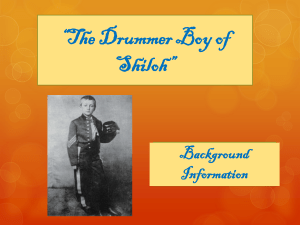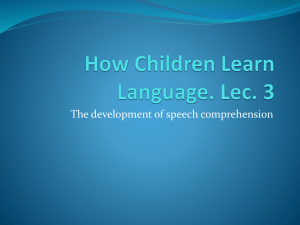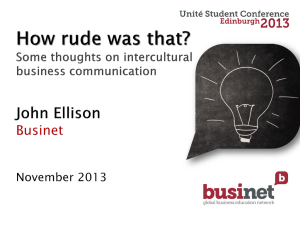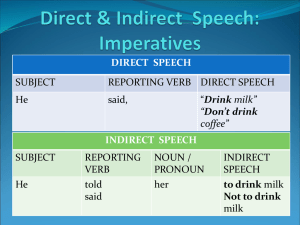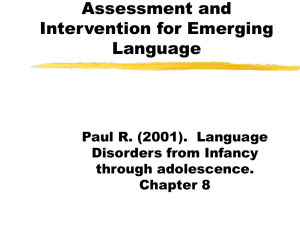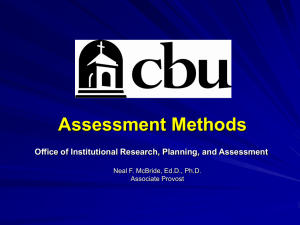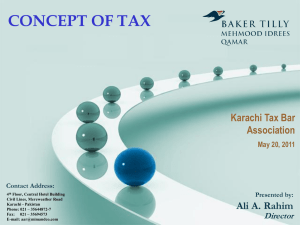Comprehending Conversational Utterances
advertisement
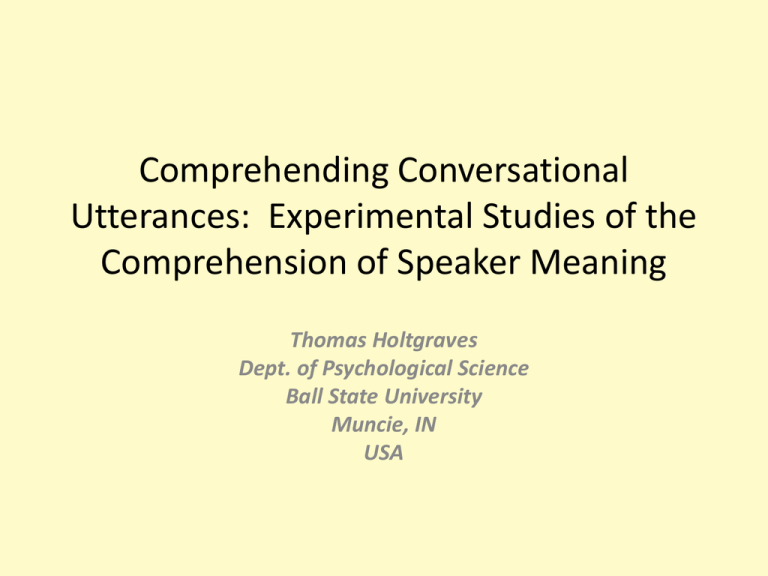
Comprehending Conversational Utterances: Experimental Studies of the Comprehension of Speaker Meaning Thomas Holtgraves Dept. of Psychological Science Ball State University Muncie, IN USA Speaker Meaning • What a speaker intends to convey with an utterance on a particular occasion of use (Clark, 1985) • Often different from literal or direct meaning • Fundamental issue: How do language users comprehend indirect speaker meaning? • What are the social, cognitive, and neural processes that underlie comprehension? Examples of Nonliteral Speaker Meaning Types of Nonliteral Meaning Commonly studied: Metaphor – My job is a jail. Ironic sarcasm – You’re a great friend (when one isn’t) Indirect requests – Could you open the window? Less commonly studied: Implicit Speech acts Indirect replies Different Comprehension Processes Involved Implicit Speech Acts Speech Act Theory • John Austin and John Searle • Language use as action • Illocutionary act – specific act(s) speaker intends the hearer to recognize – Take the form of speech act verbs (e.g., criticize, thank, apologize, offer, etc.) • Implicit speech acts do not contain the speech act verb (I’ll definitely do it tomorrow) Speech Act Processing • Is speech act recognition involved in utterance comprehension? Necessary? (Not according to relevance theory) Good enough processing in conversations; quick take on speaker meaning (via speech act recognition) Speech Act Activation Experiments (Holtgraves & Ashley, 2001; Holtgraves, 2008) Jenny and Emily had been close friends since grade school. Now there were rooming together at college. Emily was very forgetful. Today, Jenny was sure Emily didn’t remember her dentist appointment. Jenny: Don’t forget to go to your dentist appointment today. + REMIND Sample Experimental Materials Jenny and Emily had been close friends since grade school. Now there were rooming together at college. Emily was very forgetful. Today, Jenny was sure Emily didn’t remember (had forgotten) her dentist appointment. Jenny: Don’t forget (I’ll bet you forgot) to go to your dentist appointment today. Probe: Remind Recognition Probe Reaction Times (ms) Holtgraves, 2008 920 900 880 860 840 820 800 780 760 740 720 Speech Act Control Written Auditory Implicit Speech Act Comprehension Experiments • Lexical Decision Procedure (Word/Nonword): – Judge speech act words (e.g., remind) faster after speech act utterances than control utterances • Participants vs. Observers – Conversation Bot (SAM): • Participants demonstrate automatic speech act activation – SAM: Don’t take a class from Harmon, he’s terrible » WARN Speech Acts and Memory Holtgraves (2008) • Do Speech acts play a role in long-term representation? • Participants read scenarios/utterances – Speech act/control versions – Rated scenarios (incidental memory) – Intervening task (recall states) • Memory test – Recognition or Recall False Memory for Speech Act Verbs 18% 16% 14% 12% 10% Speech Act Control 8% 6% 4% 2% 0% Recognition Recall What are the Neurophysiological Underpinnings of Speech Act Comprehension? Does Everyone Automatically Recognize Speech Acts? Speech Act Recognition in Parkinson’s Disease Parkinson’s Disease (PD) can display cognitive and social deficits as well as motor deficits Are social deficits due to pragmatic deficits (speech act recognition)? PD (N = 28) and age matched controls (N = 32) performed lexical decision task following speech act/control scenarios (rewritten for PD). - Assess executive function (stroop task) Lexical Decision Times (ms) Holtgraves & McNamara, 2010 1900 1700 1500 1300 Speech Act Control 1100 900 700 500 Control Participants Parkinson's Participants Speech Act Priming and Utterance Production • Speech act priming correlated with underinformativeness in interactions – Interviews coded for under-informativeness • Failure to recognize others’ intentions related to lack of informativeness in utterance production Neural Underpinnings • Why speech act recognition disrupted in PD? • Our results suggest executive cognitive function: – Speech act priming correlated with stroop interference for PD Ps(r = - .81) but not control Ps (r = .05). • Action verb/motor circuit connection • Speech act deficit due to motor impairment • Comprehension of action entails some simulation of action (embodied cognition) • Upper body impairment - more lower body verbs Neural Underpinnngs of Speech Act Comprehension: Lateralization • Role of right hemisphere (RH) in speaker meaning – Evidence from RHD participants (poor at recognizing nonliteral meanings) – RH intention recognition (imaging data) • Predict RH specialized for Speech Act comprehension • Speech Act Comprehension materials – Lateralize targets to RVF/LH or LVF/RH Jenny: Don’t forget to go to your dentist appointment today. + REMIND Lexical Decision Speed as a Function of Utterance Type and Visual Field Holtgraves, 2012 Indirect Replies Context-Dependent Speaker Meaning Indirect Replies • Replies that violate the Relation Maxim (be relevant) • No preferred reading out of context (particularized implicatures) Example: • Nick: What did you think of my presentation? • Paul: It’s hard to give a good presentation. Indirect Replies –How are indirect replies interpreted? –Why are they interpreted this way? –How do people make this interpretation? –What are the neural underpinnings of this process? Model: Grice + Goffman • Relevance violation is noticed/inference generated • Inference based on perceived reason for violation • Relevance violations occur because of face management • Recipients realize this and use it as an interpretive frame • In general, relevance violations should be interpreted as conveying FT information Relevance Violation Experiments Which inference? • Participants read scenarios, questions and replies • Manipulate context: – Positive (presentation was good) – Negative (presentation was bad) – No information • Ask Ps to: • Interpret replies • Time reply comprehension 90.00% 80.00% 70.00% 60.00% 50.00% 40.00% 30.00% 20.00% 10.00% 0.00% j No Information Negative Information Positive Information Percent Negative Interpretations Indirect replies interpreted just as negatively in no information contexts as in negative information contexts 2800 2700 2600 2500 2400 2300 2200 2100 2000 No Information Negative Information Positive Information Reply Comprehension Speed (in ms) as a Function of Context Indirect replies interpreted just as quickly in no information contexts as in negative information contexts Relevance Violation Experiments Comprehension Processes • Manipulate context: Force literal or indirect reading • Assess: reply comprehension speed indirect meaning priming literal priming 2800 2600 2400 2200 2000 1800 1600 1400 1200 1000 Indirect Reading Literal Reading Reply Comprehension Speed (ms) • Process is time-consuming (replies with indirect meanings take longer than matched controls) 1900 1800 1700 1600 1500 1400 1300 1200 1100 1000 Indirect Reading Literal Reading Sentence Verification Speed (ms) Sentence verification judgments for indirect interpretations faster following replies with indirect meanings relative to replies with literal meaning: Indirect meaning activated on-line (at comprehension, not posthoc) Dispreferred Markers and Reply Comprehension • If recognition of face management drives interpretive process, then factors suggesting face management is operative should facilitate comprehension • Indirect Reply comprehension faster if preceded by: – “Well” – Brief delay (2 s) Neural Correlates Basnakova et al., 2011 • fMRI while comprehending indirect replies • Face-saving vs. informative indirect replies (It’s hard to give a good presentation) – Greater activation of: • Right Anterior Cingulate Cortex (empathy) • Right Superior Temporal Gyrus (inferencing) • Right Inferior Frontal Cortex (contextual integration) Summing Up • Nonliteral speaker meaning is pervasive in conversation • Many different types of nonliteral meaning • Different social, cognitive, and neural processes involved in their comprehension • Social processes: face management – Comprehension is a mirror image of production (FM) • Cognitive processes: good enough processing • Neural processes: RH and frontal networks involved in perspective taking and inferencing (networks different from classic language networks) • Process models require more research on real-time pragmatic processing (e.g., EEG)

